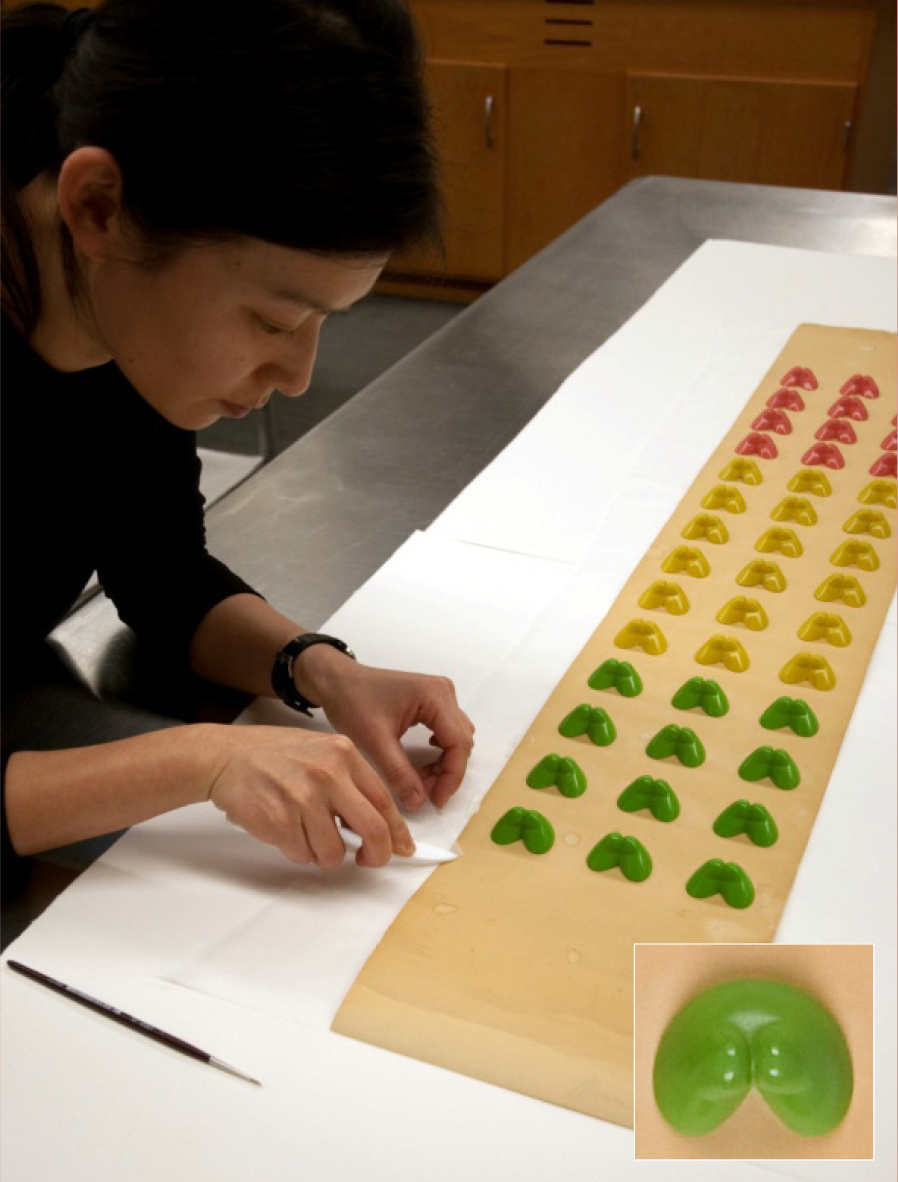Treatment FOCUS: Candy Bottoms
Less commonplace today—maybe because they never unstuck cleanly from the not-so-tasty backing paper—Candy Buttons were once a childhood staple. The colorful dots of sugar came in three flavors, lemon, lime, and cherry, arrayed in rows of four.
“Candy Bottoms,” a work reminiscent of the candy (but with a slight twist), recently arrived at CCAHA. Philadelphia-based artist Linda Brenner, who created the work in 1979 using plaster castings and spray paint, brought it in on behalf of its current owner.
“I usually have something lighthearted in my work,” Brenner said. From a young age, she knew that she would be an artist, working primarily in three dimensions. Ceramics was a favorite department at the Tyler School of Art, where she took children’s classes—but getting into the classes presented a challenge. “They were reserved for the older kids,” Brenner said. “It wasn’t so easy to pursue, but I managed.” She later attended the Rhode Island School of Design and has worked full-time as an artist since then.

Paper Conservator Minah Song surface cleaned the paper support of “Candy Bottoms” to reduce surface soil
When she created “Candy Bottoms,” Brenner was drawing from the human figure to make abstract, geometric arrangements. More recently, she has been carving wood from discarded city trees; the resulting sculptures often suggest the places where the material once grew.
Brenner’s work has appeared worldwide, including in Philadelphia. Her “Ghost Cats,” an installation at the Eastern State Penitentiary, just completed an eight-year run. The 39 plaster castings placed throughout the prison represented the colony of cats that inhabited it in the 70s and 80s. The remaining plaster cats now occupy Brenner’s studio, waiting to be sent to new owners along with a map showing where each cat “lived.” “The location of the cat affected what it looked like at the end,” Brenner said, pointing out one that had sat next to a drain and had “typical damage like chewed-up ears and tail-melt.”
Placing thin Mylar strips between the plaster castings helped to maximize the pull of the suction table, adhering the paper support to the alkaline ragboard lining
For Brenner, damage is not necessarily problematic. “What was so charming about the cats was that they deteriorated, which is what happens to cats,” she said. She appreciates that in conservation, as opposed to restoration, “it is not necessary to make the work look as it was originally. Conservation takes into account that how time affects materials can be part of the work.”
Brenner spoke extensively with CCAHA Paper Conservator Minah Song before treatment of “Candy Bottoms” began. “She was very understanding about my approach,” Brenner said. When formulating treatment steps, Song took into consideration both standard conservation recommendations and the artist’s intentions. She surface cleaned the front of the brittle paper support to reduce surface soil that had accumulated over the years and removed tapes from the back. She humidified and flattened the paper, which had curled at the bottom, and then lined it with alkaline ragboard. Finally, she filled several losses and attached a fabric strip at the top edge to strengthen the work for display.
